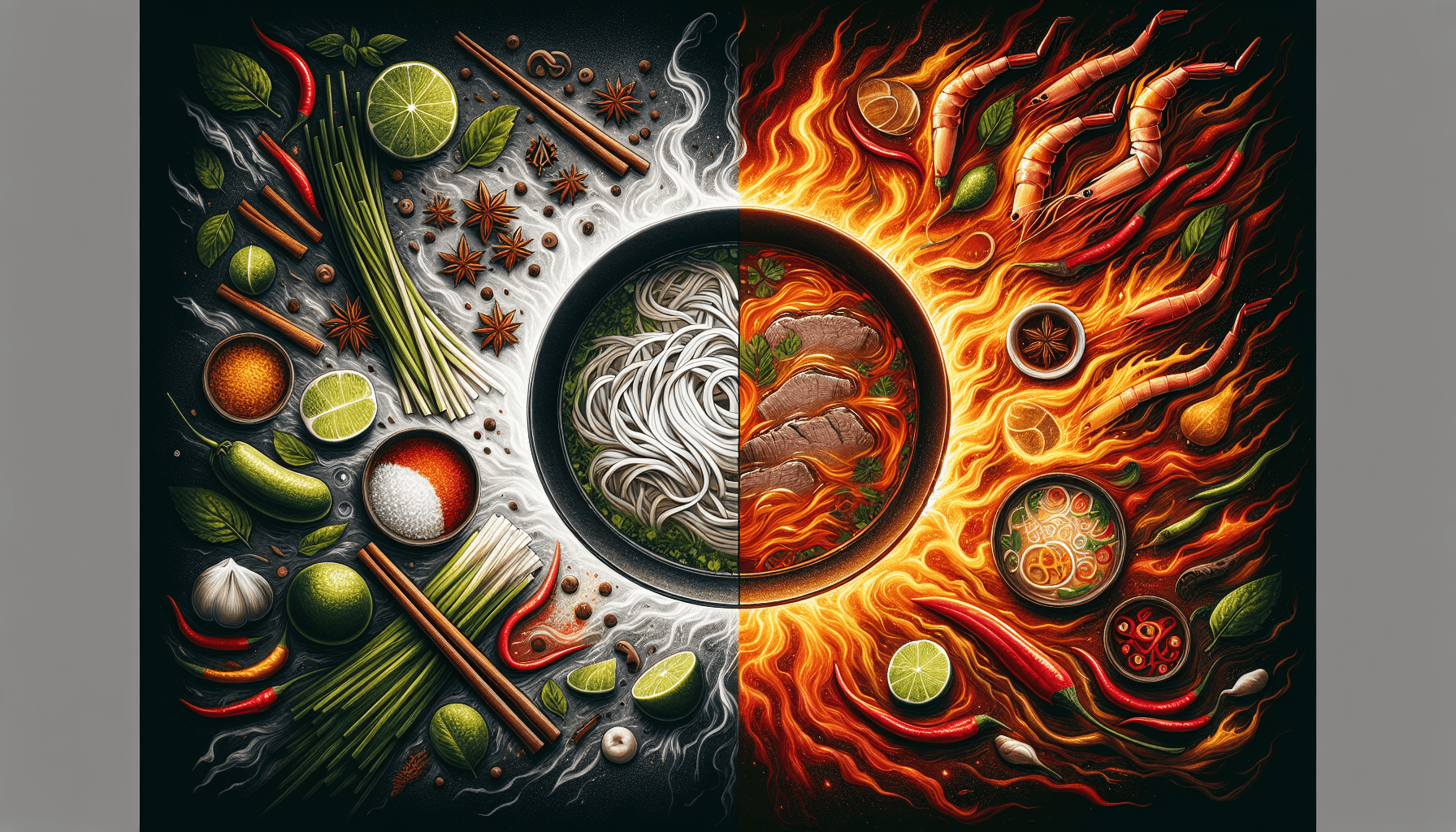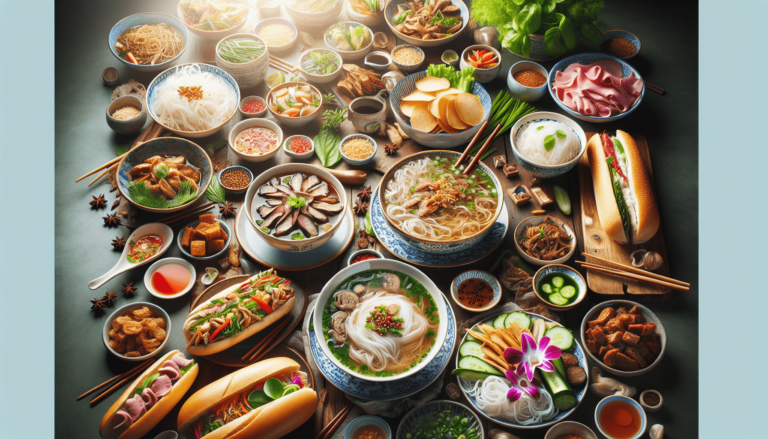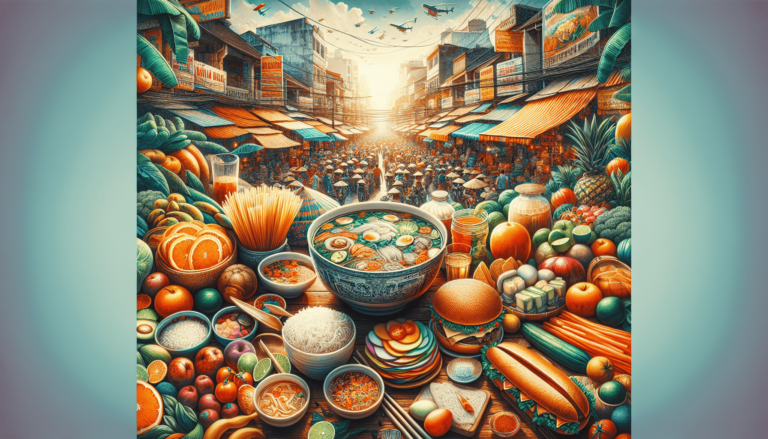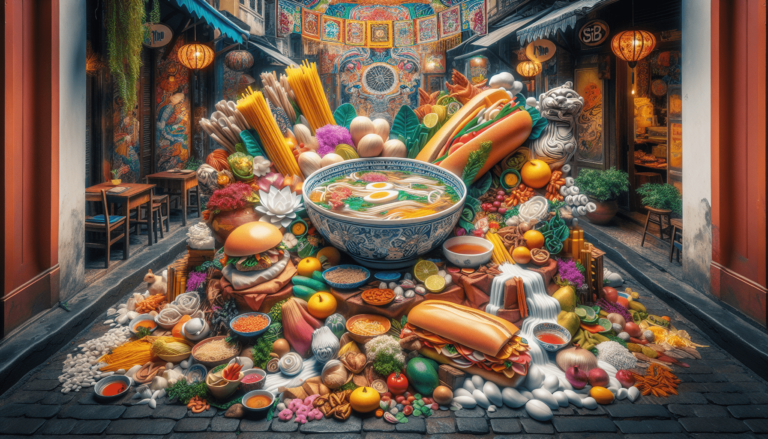Have you ever wondered about the origins of pho? Is it Thai or Vietnamese? This age-old question has sparked debates among food enthusiasts and travelers alike. Pho, a popular and comforting noodle soup, has become a beloved dish worldwide. But where does it truly come from? In this article, we will explore the rich history of pho and unravel the mystery behind its cultural roots, taking you on a mouthwatering journey through Vietnam and Thailand. So grab a bowl of pho and get ready to indulge in the flavors and stories behind this iconic dish.
Origins of Pho
Historical background of Pho
Pho, a beloved Vietnamese noodle soup dish, has a rich history that dates back to the early 20th century. It originated in northern Vietnam, particularly in Hanoi, and it quickly gained popularity throughout the country. The exact origins of Pho are a topic of debate among food historians, but it is widely believed to have been influenced by both Chinese and French culinary traditions.
The first appearance of Pho
Pho first appeared in the streets of Hanoi during the French colonial period. It started as a simple street food, with vendors selling bowls of flavorful broth, rice noodles, and various cuts of beef or chicken. The dish became a staple among the working class population, offering a hearty and affordable meal.
Influence on the creation of Pho
The creation of Pho was influenced by the Chinese noodle soups brought to Vietnam by immigrants. The Chinese brought with them their culinary techniques and ingredients, which found their way into the development of Pho. Additionally, the French occupation of Vietnam introduced the concept of using beef as a key ingredient in the dish, as well as the influence of French techniques in making the broth.
The Vietnamese Influence
Role of Vietnamese culture in Pho
Pho has become deeply ingrained in Vietnamese culture, representing more than just a dish. It is a symbol of national pride and identity, reflecting the resilience and adaptability of the Vietnamese people. The preparation and consumption of Pho transcend mere sustenance, as it brings families and communities together to share a common culinary experience.
Pho as a Vietnamese national dish
Pho is considered a national dish of Vietnam and holds a special place in Vietnamese cuisine. It is so deeply embedded in the culinary fabric of the country that it is often regarded as a cultural icon. Vietnamese people take great pride in their Pho, and its popularity extends beyond Vietnam’s borders, making it a globally recognized symbol of Vietnamese cuisine.
Variations of Pho in different regions of Vietnam
While Pho originated in northern Vietnam, it has evolved differently in different regions of the country. In the south, Pho tends to be sweeter and spicier, with the addition of more herbs and bean sprouts. In central Vietnam, Pho is often served with a wider variety of fresh herbs and vegetables. These regional variations showcase the diverse culinary landscape of Vietnam and highlight the adaptability of Pho to local tastes and preferences.

The Thai Influence
Comparison between Pho and Thai soup dishes
Although Pho and Thai soup dishes may share some similarities, they are distinct in their flavors, ingredients, and preparation methods. Pho is characterized by its rich and aromatic beef-based broth, whereas Thai soups often feature a combination of spicy, sour, and sweet flavors, with ingredients such as lemongrass, galangal, and lime leaves.
Influence of Thai cuisine on global perception of Pho
Thai cuisine has undoubtedly had a significant influence on the global perception of Pho. Thai restaurants have become more prevalent in many countries, introducing people to the flavors of Southeast Asia. This exposure to Thai cuisine has often led to misconceptions that Pho is a Thai dish, when in fact, it is distinctly Vietnamese. The popularity of Thai food has inadvertently contributed to the global recognition of Pho, but it must be emphasized that Pho is deeply rooted in Vietnamese culinary traditions.
Common misconceptions about Pho being a Thai dish
Despite its Vietnamese origins, there has been a persistent misconception that Pho is a Thai dish. This misconception may stem from the popularity of Thai cuisine, the similarities in the use of noodles and herbs, and the lack of knowledge about Vietnamese cuisine in some parts of the world. It is essential to correct this misconception and give credit to the rich culinary heritage of Vietnam.
Key Ingredients of Pho
Breakdown of ingredients typically found in Pho
Pho is known for its complex and flavorful broth, which is the key to its success. The broth is typically made by simmering beef bones or chicken carcasses for several hours, along with aromatics such as onions, ginger, and spices like star anise and cinnamon. Rice noodles, thinly sliced beef or chicken, and an array of toppings such as bean sprouts, fresh herbs, and lime complete the dish.
Reasons why these ingredients are chosen
The selection of ingredients in Pho is driven by both culinary considerations and cultural philosophies. The use of beef bones or chicken carcasses creates a rich and umami-packed broth that forms the foundation of the dish. The delicate rice noodles provide a soft and chewy texture, while the thinly sliced meat adds protein and flavor. The addition of fresh herbs and toppings enhances the overall taste and provides a vibrant contrast to the rich broth.
How the selection of ingredients aligns with Vietnamese cooking philosophy
The selection of ingredients aligns with the Vietnamese cooking philosophy of balance and harmony. The combination of flavors, textures, and aromas in Pho creates a harmonious and well-rounded dish. The use of fresh herbs and vegetables reflects the emphasis on incorporating natural, seasonal ingredients into Vietnamese cuisine. The careful balance of flavors, from the richness of the broth to the freshness of the garnishes, is a testament to the meticulous approach to cooking in Vietnamese culture.

Is Pho Thai or Vietnamese?
Exploring the debate
The debate surrounding whether Pho is Thai or Vietnamese is one that has sparked much discussion. While some may argue that the flavors and ingredients used in Pho resemble those found in Thai cuisine, it is essential to recognize Pho’s Vietnamese origins and its deep cultural significance to the Vietnamese people.
Cultural attributions of Pho
Pho is undeniably a dish deeply rooted in Vietnamese culture. It represents the resilience, adaptability, and culinary heritage of the Vietnamese people. The cultural attributions of Pho, from its historical origins to its status as a national dish, firmly establish it as a Vietnamese culinary masterpiece.
Settling the controversy
To settle the controversy once and for all, it is crucial to acknowledge Pho’s origins and its place in Vietnamese cuisine. While Thai cuisine may have influenced global perceptions of Pho, it is essential to differentiate between the two and appreciate Pho as a distinctively Vietnamese dish.
Differences between Pho and Thai Noodle Soup
Contrast in preparation and cooking methods
Pho and Thai noodle soup differ in their preparation and cooking methods. Pho requires slow simmering of beef bones or chicken carcasses over an extended period, resulting in a deeply flavored broth. Thai noodle soups, on the other hand, often involve the use of quick-cooking techniques, such as stir-frying or boiling, to create their distinct flavors.
Variations in flavor profiles
Pho and Thai noodle soups also differ in their flavor profiles. Pho is known for its comforting and aromatic beef-based broth, while Thai noodle soups encompass a wide range of flavors, from spicy and sour to sweet and savory, often influenced by the use of ingredients such as lemongrass, lime leaves, and Thai chilies.
Discrepancies in ingredients used
The ingredients used in Pho and Thai noodle soups also reveal differences between the two dishes. Pho relies heavily on the use of beef bones or chicken carcasses, along with aromatics and spices, to create its distinct flavor. Thai noodle soups often incorporate ingredients such as fish sauce, shrimp paste, and a variety of herbs and spices, resulting in a different taste profile.
Influence of Pho in Global Cuisine
Popularity of Pho outside of Vietnam
Pho has gained significant popularity worldwide, transcending its Vietnamese origins. Its unique flavors, comforting qualities, and versatility have captured the hearts and taste buds of people from all walks of life. Pho’s popularity can be attributed to its ability to satisfy cravings for a warm and nourishing meal, making it a beloved choice in global cuisine.
Adaptations of Pho recipe in Western countries
As Pho spread beyond Vietnam’s borders, it has undergone adaptations to cater to local tastes and preferences. In Western countries, Pho has become a culinary sensation, with variations featuring different types of protein, vegetarian options, and personalized toppings. These adaptations showcase the versatility of Pho and its ability to evolve while retaining its essence.
Pho’s status in the global culinary scene
Pho’s status in the global culinary scene is a testament to its enduring appeal. It has become a menu staple in many international cities, with Vietnamese restaurants serving as ambassadors of this iconic dish. The recognition and appreciation for Pho worldwide highlight its cultural significance and its ability to bridge culinary traditions across different cultures.
Making Pho at Home
Guidelines for making authentic Vietnamese Pho
Making authentic Vietnamese Pho at home requires attention to detail and a few essential steps. It starts with preparing a flavorful broth by simmering beef bones or chicken carcasses with aromatics and spices for several hours. Rice noodles are cooked separately, and thinly sliced beef or chicken is added to the hot bowls of broth and noodles. Finally, the dish is garnished with bean sprouts, fresh herbs, and a squeeze of lime.
Common pitfalls to avoid when cooking Pho
There are a few common pitfalls that should be avoided when cooking Pho. One common mistake is overcooking the noodles, resulting in a mushy texture. Another mistake is not skimming the impurities from the broth, which can lead to an off-putting taste. Additionally, using too many or too few spices can throw off the balance of flavors in the broth.
Tips and tricks to achieve the perfect Pho broth
To achieve the perfect Pho broth, a few tips and tricks can be helpful. One tip is to roast the spices before adding them to the broth, as this will release their aromas and enhance the flavor. Another tip is to use a combination of bones and meat when making the broth, as this will result in a richer and more complex flavor. Lastly, continuously skimming the impurities from the broth during the simmering process will ensure a clear and clean-tasting broth.
Pho in Popular Culture
Depiction of Pho in movies and television
Pho has made appearances in movies and television shows, further solidifying its place in popular culture. Whether it’s a scene showcasing characters enjoying a steaming bowl of Pho or a culinary adventure exploring the origins of the dish, Pho’s presence in popular media has contributed to its widespread recognition.
Pho’s presence in travel and food shows
The popularity of travel and food shows has also played a significant role in showcasing Pho to a global audience. Renowned chefs and hosts often visit Vietnam to explore its culinary traditions, and Pho is frequently featured as a must-try dish. These shows help to generate interest and curiosity about Pho, inspiring viewers to seek out and experience this iconic Vietnamese dish.
Impact of popular culture on Pho’s popularity
The impact of popular culture on Pho’s popularity cannot be understated. Movies, television shows, and travel programs have helped familiarize people around the world with Pho, creating a sense of intrigue and a desire to try it firsthand. This exposure has undoubtedly contributed to Pho’s rise as a beloved dish in global culinary circles.
Sampling Pho in Restaurants
Recommendation to visit Eurasian Bistro locations in Pensacola
For those looking to sample Pho in a restaurant, Eurasian Bistro is highly recommended. With convenient locations in Pensacola, this restaurant offers an authentic dining experience that captures the essence of Vietnamese cuisine. The skilled chefs at Eurasian Bistro prepare Pho with care and attention to detail, ensuring a flavorful and satisfying meal.
What to expect when ordering Pho in a restaurant
When ordering Pho in a restaurant, one can expect a comforting and aromatic bowl of goodness. The server will typically bring a steaming bowl of broth filled with rice noodles and the choice of protein, along with a plate of fresh herbs, bean sprouts, lime wedges, and other toppings. Diners can customize their Pho by adding the desired garnishes and adjusting the flavors with sauces and spices available on the table.
How restaurants present and serve Pho
Restaurants often take pride in presenting and serving Pho with attention to detail. The bowl of Pho is carefully arranged, with the noodles visible at the bottom, followed by the protein and garnishes. The broth is poured over the ingredients tableside, ensuring that the dish is served piping hot. The presentation of Pho is meant to be enticing, showcasing the vibrant colors and inviting aromas of the dish.
In conclusion, Pho’s origins are firmly rooted in Vietnamese culture, with influences from Chinese and French culinary traditions. While Thai cuisine may have influenced global perceptions of Pho, it is crucial to recognize and appreciate Pho as distinctly Vietnamese. Its key ingredients, intricate preparation, and versatility have made it a beloved dish worldwide. Whether enjoying Pho at home or sampling it in a restaurant, this iconic Vietnamese dish continues to captivate food enthusiasts and contribute to the rich tapestry of global cuisine.







